GPCR/G protein

All GPCRs share a common seven trans-membrane structure. GPCRs are associated with heterotrimeric G-proteins which are GTP-binding proteins made of alpha, beta, and gamma subunits. When a ligand binds to GPCR, it activates the attached G-protein, the GDP is replaced with GTP. The activated G-protein then dissociates into an alpha and a beta-gamma complex which activates downstream signaling pathways. These intracellular signaling pathways include cAMP/PKA, calcium/NFAT, phospholipase C, protein tyrosine kinases, MAP kinases, PI-3-kinase, nitric oxide/cGMP, Rho, and JAK/STAT.
GPCRs are one of the most important therapeutic targets for various diseases, over 30% of all modern medicinal drugs target this family. Aberrant GPCR functions are involved in pathological conditions such as neurological, immunological and hormonal disorders. A large number of GPCRs have been identified, but whose ligands are not known, are classified as orphan receptors.
-
 B7046 A-71623Summary: CCK1 agonist
B7046 A-71623Summary: CCK1 agonist -
![[Pyr1]-Apelin-13](/pub/media/prod_images/b/7/b7050.png) B7050 [Pyr1]-Apelin-13Summary: Endogenous ligand for apelin APJ receptor
B7050 [Pyr1]-Apelin-13Summary: Endogenous ligand for apelin APJ receptor -
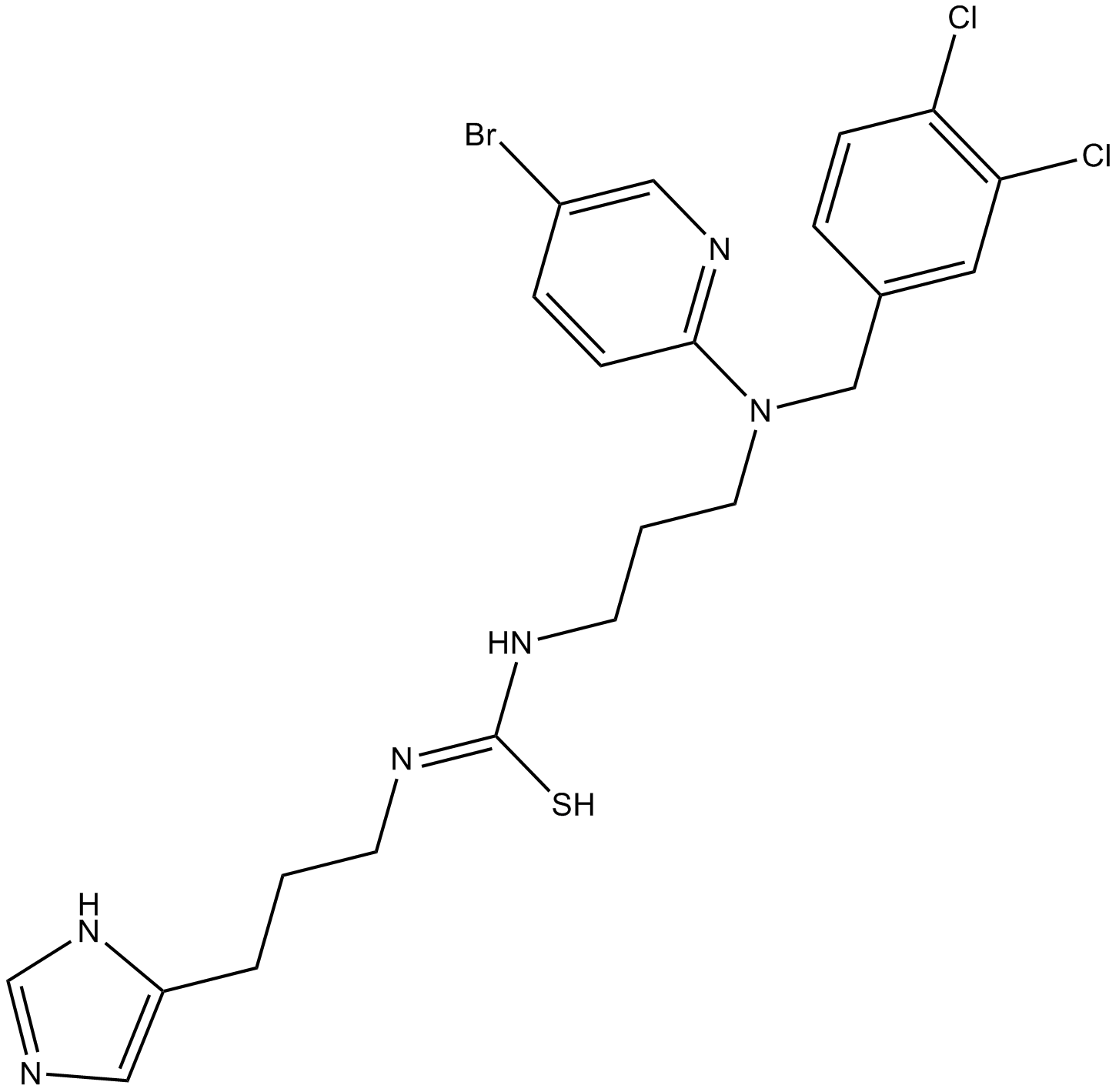 B7054 NNC 26-9100Summary: Somatostatin sst4 receptor agonist
B7054 NNC 26-9100Summary: Somatostatin sst4 receptor agonist -
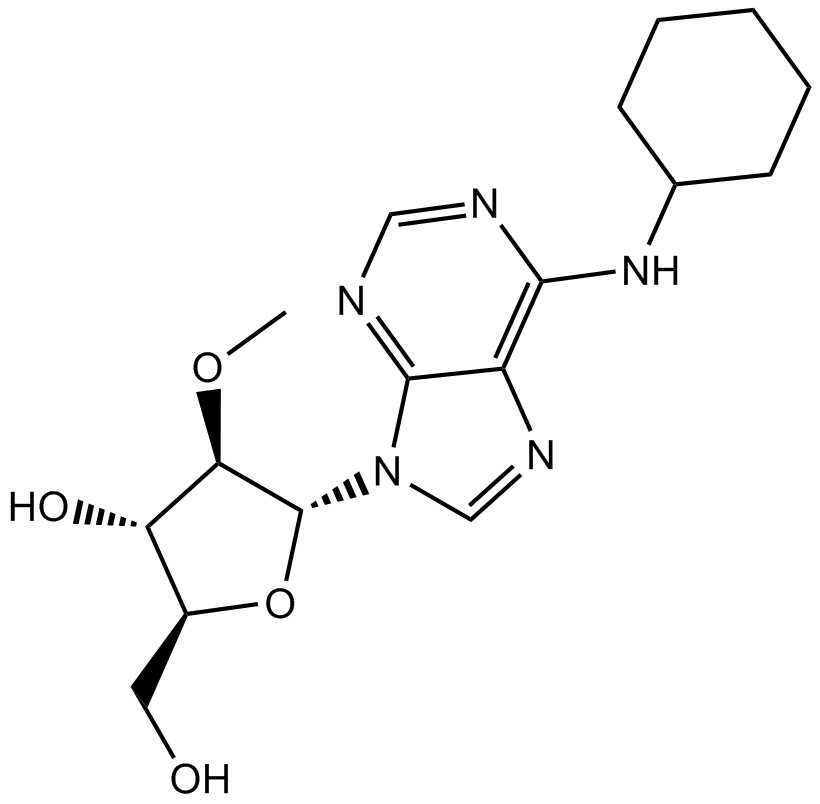 B7067 SDZ WAG 994Summary: A1 adenosine receptor agonist
B7067 SDZ WAG 994Summary: A1 adenosine receptor agonist -
 B7080 MRS 2693 trisodium saltSummary: P2Y6 agonist
B7080 MRS 2693 trisodium saltSummary: P2Y6 agonist -
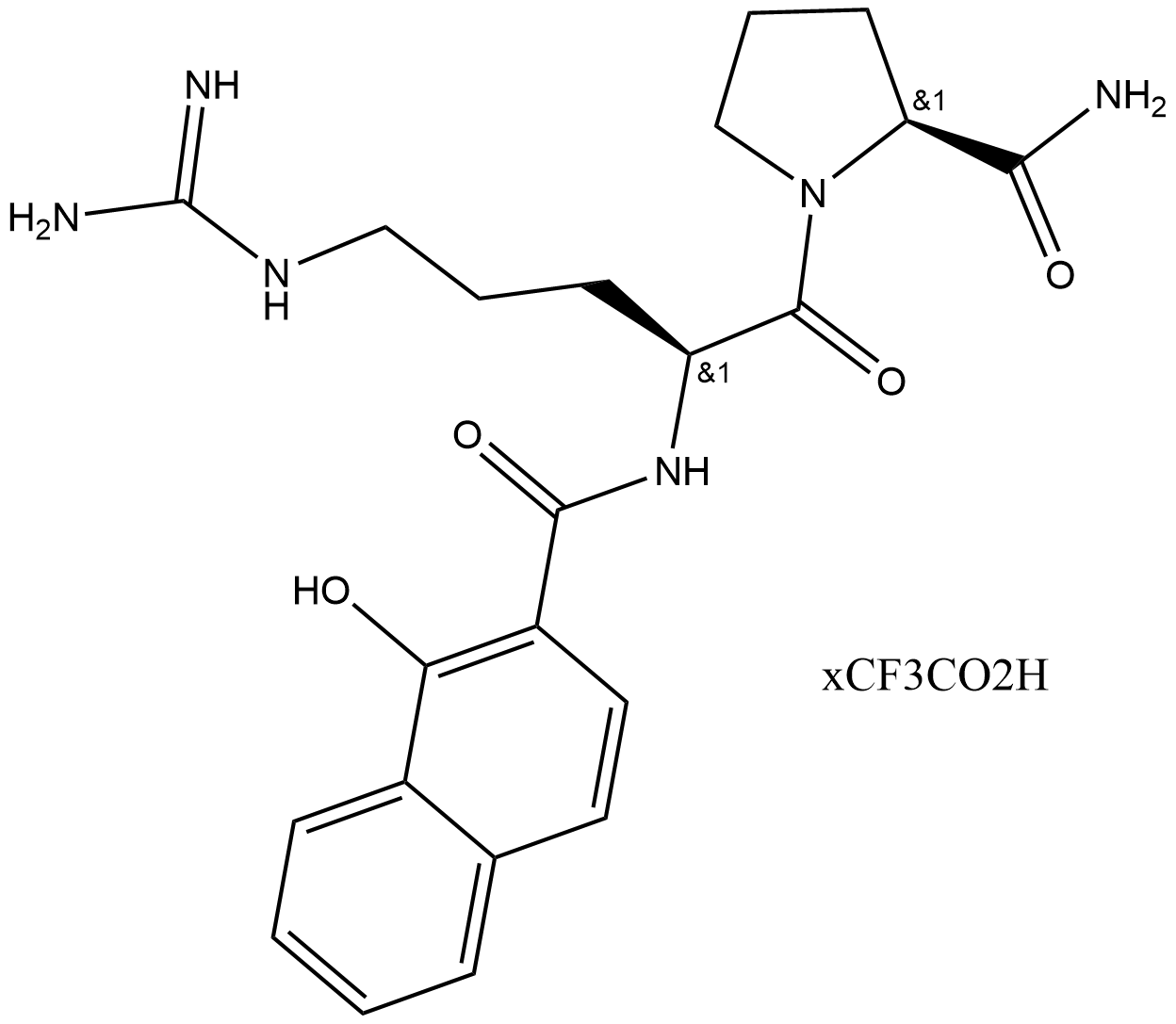 B7087 APC 366 (trifluoroacetate salt)Summary: mast cell tryptase inhibitor,selective and competitive
B7087 APC 366 (trifluoroacetate salt)Summary: mast cell tryptase inhibitor,selective and competitive -
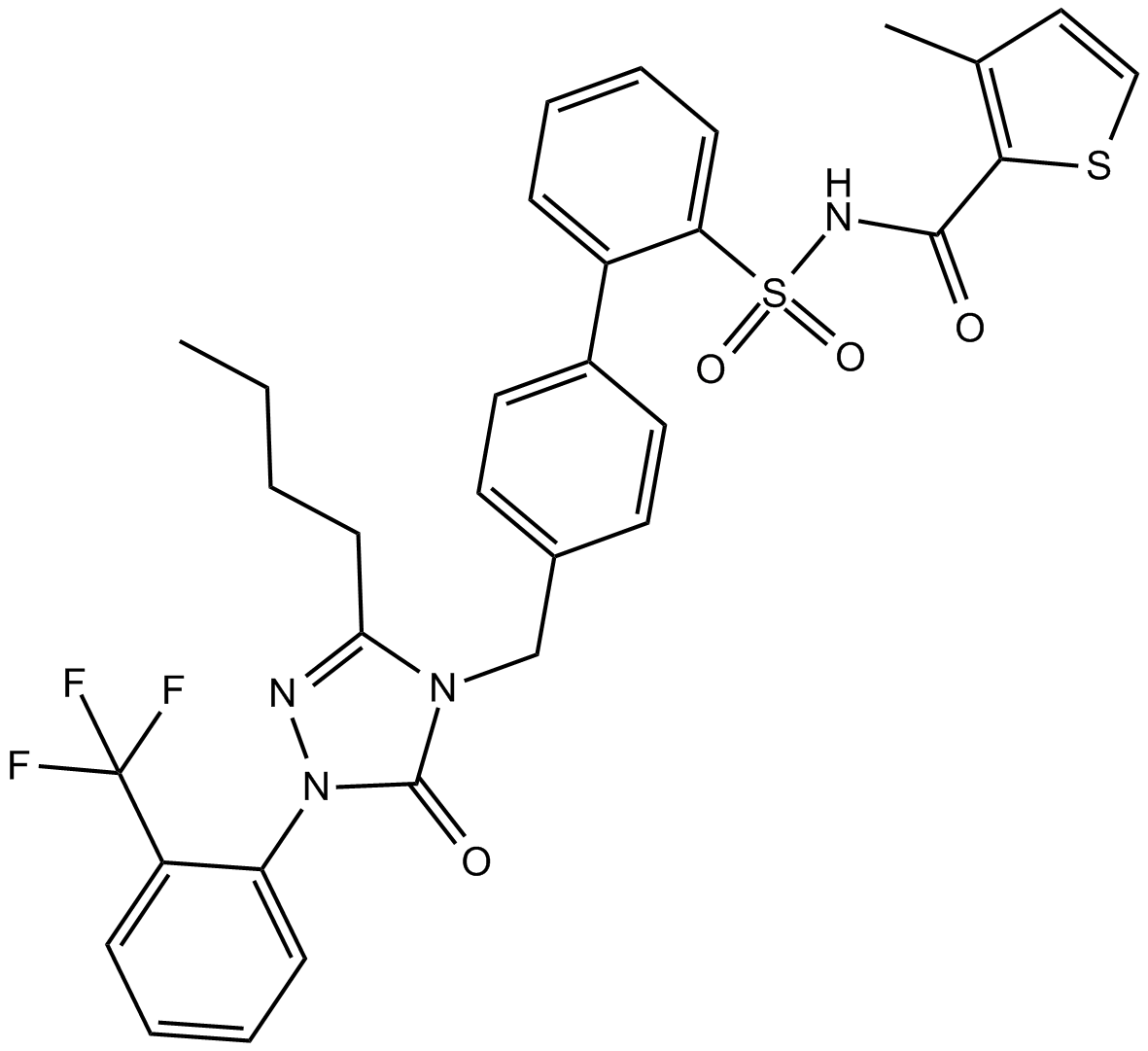 B7088 L-161,982Target: Prostanoid ReceptorsSummary: EP4 receptor antagonist
B7088 L-161,982Target: Prostanoid ReceptorsSummary: EP4 receptor antagonist -
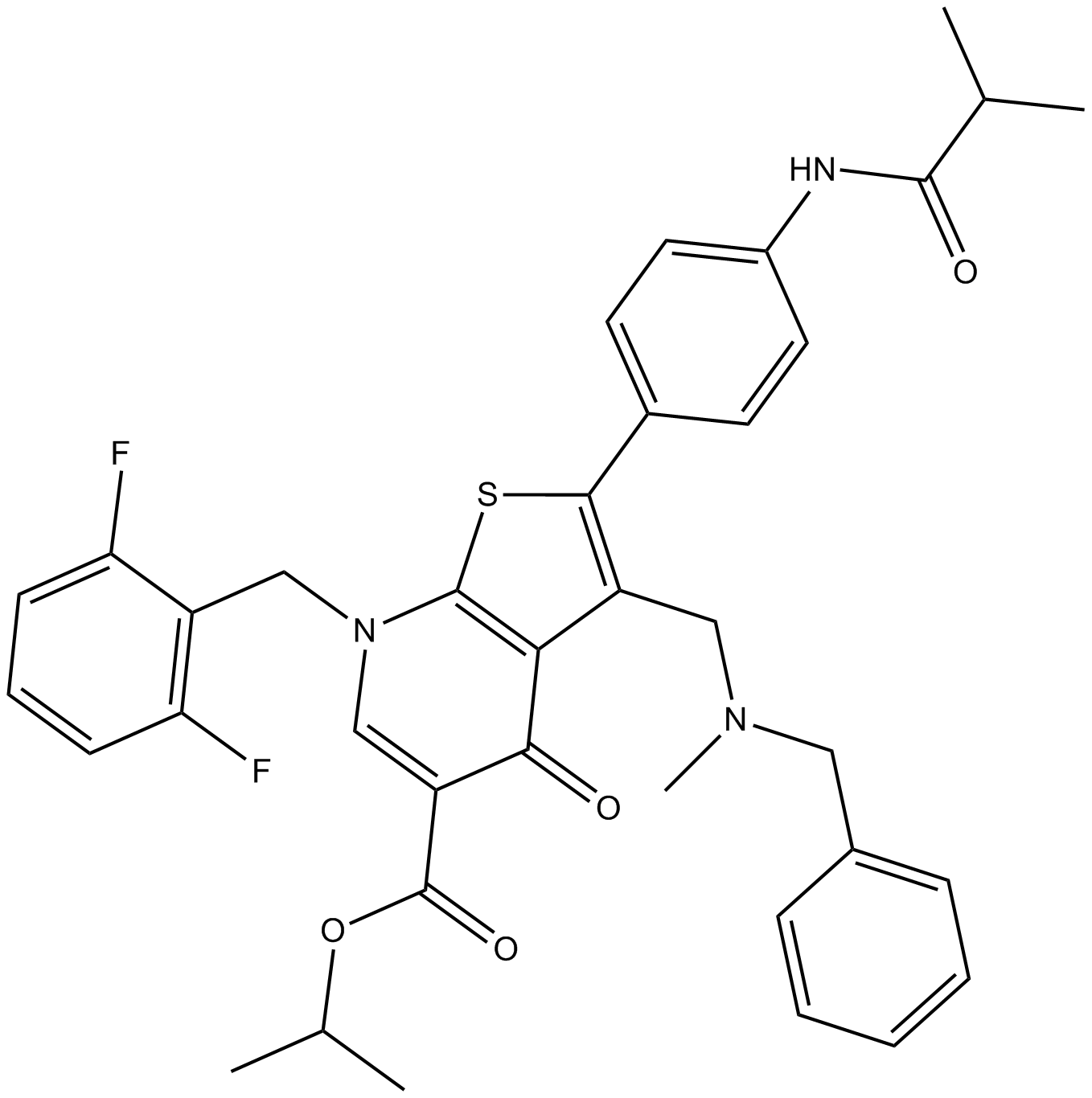 B7090 T 98475Summary: gonadotropin-releasing hormone (GnRH, LHRH) receptor antagonist,orally active
B7090 T 98475Summary: gonadotropin-releasing hormone (GnRH, LHRH) receptor antagonist,orally active -
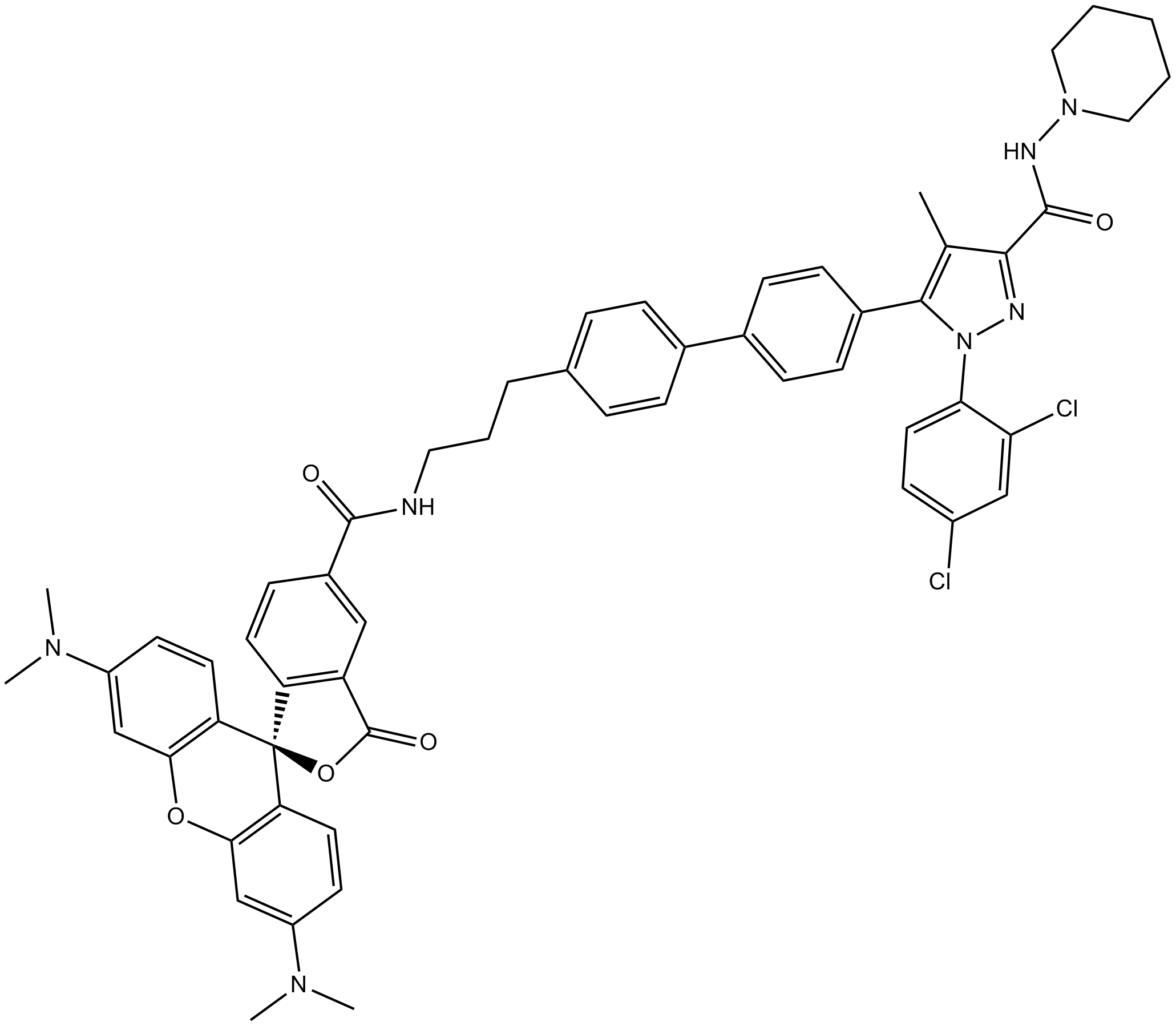 B7096 Tocrifluor T1117Summary: Fluorescent form of AM 251, CB1 receptor antagonist
B7096 Tocrifluor T1117Summary: Fluorescent form of AM 251, CB1 receptor antagonist -
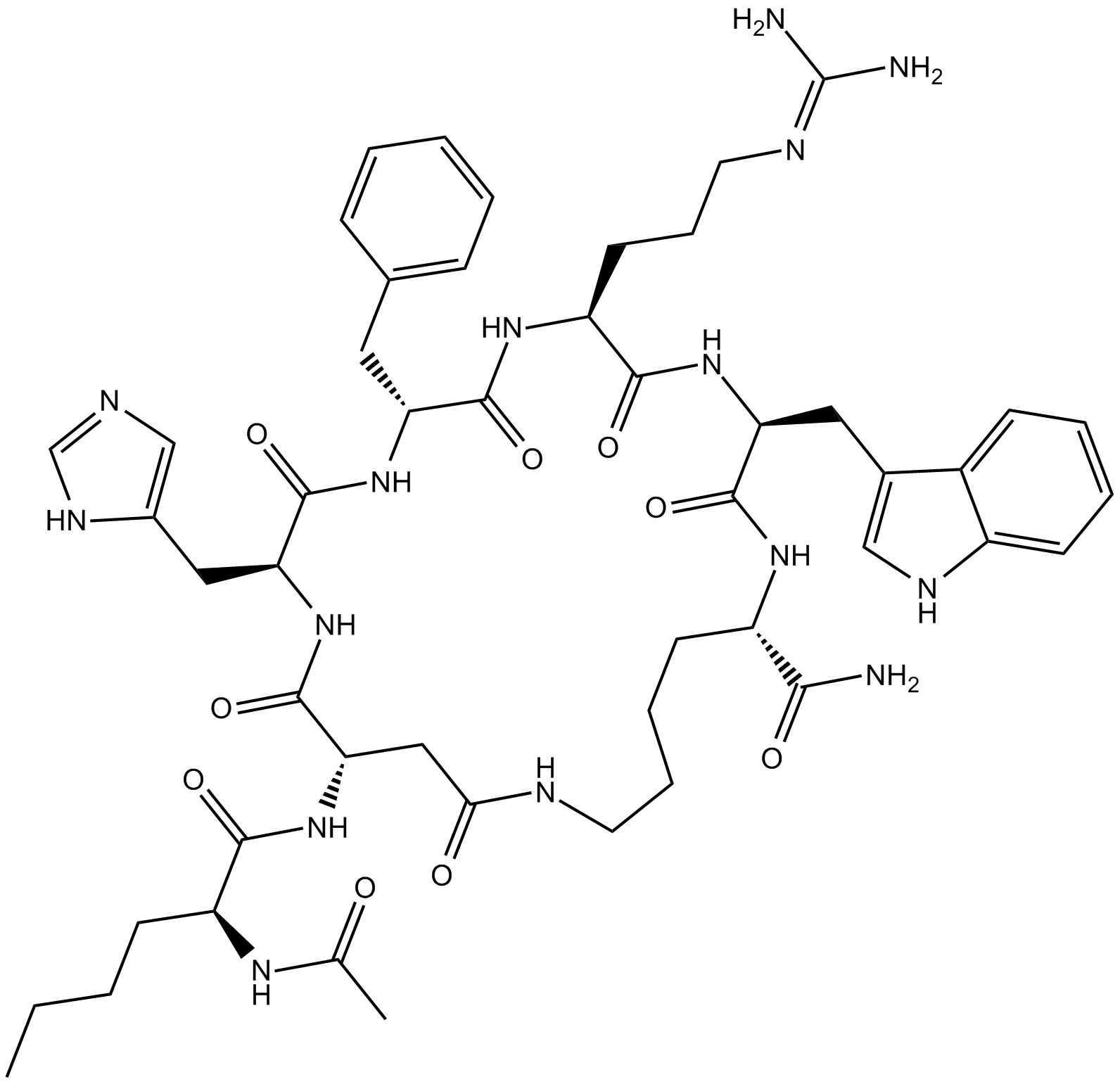 B7110 Melanotan IISummary: melanocortin receptor agonist
B7110 Melanotan IISummary: melanocortin receptor agonist

